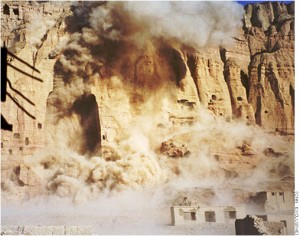“Henry Van Statten: ‘Exactly! I wanted to touch the stars!’
The Doctor: ‘You just want to drag the stars down and stick them underground beneath tons of sand and dirt and label them. You’re about as far from the stars as you can get. And you took her down with you.’”
– “Doctor Who” Season 1 Episode 6 “Dalek” (2005)
In many different ways, popular culture presents us with ideals epitomizing the habit of collecting. From the Pokemon games’ motto of “Gotta Catch’em All!” to the genres we love to read about and watch, it seems as if the companies behind those pastimes try their hardest to push our loves into consumerist obsessions. One example of this corporate control can be seen through my personal favorite Sci-Fi TV show “Doctor Who.”
The episode from which the opening quote is from provides a basis for a discussion on this type of collecting. In this episode, the Doctor and his companion, Rose Tyler, encounter eccentric American billionaire Henry Van Statten and his collection of extraterrestrial artifacts housed in an underground bunker beneath Utah in 2012. However, what they are not yet aware of is that Van Statten has recently acquired a new “exhibit”, one of the Doctor’s oldest enemies: a Dalek.

The episode’s majority encapsulates the Doctor and his interactions with Van Statten regarding his collection of alien artifacts and the danger which he has stupidly brought upon himself and the world. When the Dalek frees itself from its chains, it goes on a rampage, ironically enough so that many fans call the episode “When the Exhibits Strike Back!”
The point to extrapolate from this episode in discussion is how the collecting done by Van Statten begins to emulate how devoted fans of the show may go to wit’s end in order to begin possessing the show. What this means is that for this fandom base, or any other, there are those who will not stop until they have every piece of memorabilia related to it that they can possibly own. And even more so, the BBC America corporation decides to use these types of people in order to make serious bank, selling everything from keychains and board games to DVDs and character cardboard cutouts.

All of this is done to give the shows fans more of what they want: to become more a part of the show. To those fans, each object which they possess, whether it be an actual prop used in the show or simply souvenirs, is not just another thing they have but an intrinsic piece connecting them and the show as well as displaying their love of the show. As Knox stated, “The collector plucks the desired object out of the economic circuit, an act of selection that ‘rescues’ it from being a mere commodity, making it transcendent…” (Knox p. 287-288). It is in this manner through which we are made to be consumer collectors for the profit of companies.
Additional Readings (And Viewings):
“Doctor Who” Season 1 Episode 6 “Dalek” (Can be found on Netflix or streamed online)
Knox, S. (2003). The Serial Killer as Collector. Acts of Possession: Collecting in America. L. Dilworth. New Brunswick, Rutgers University Press: 286-302.
https://www.bbcdoctorwhoshop.com/en/?gclid=CL2h8N3z5MQCFQMQ7AodBRQA5A
– If you’re interested, look around at how much some of the souvenirs are as well as any of the TV memorabilia.
Bibliography:
http://www.chakoteya.net/doctorwho/27-6.htm
http://www.bbc.co.uk/pressoffice/pressreleases/stories/2005/04_april/21/who2.shtml


